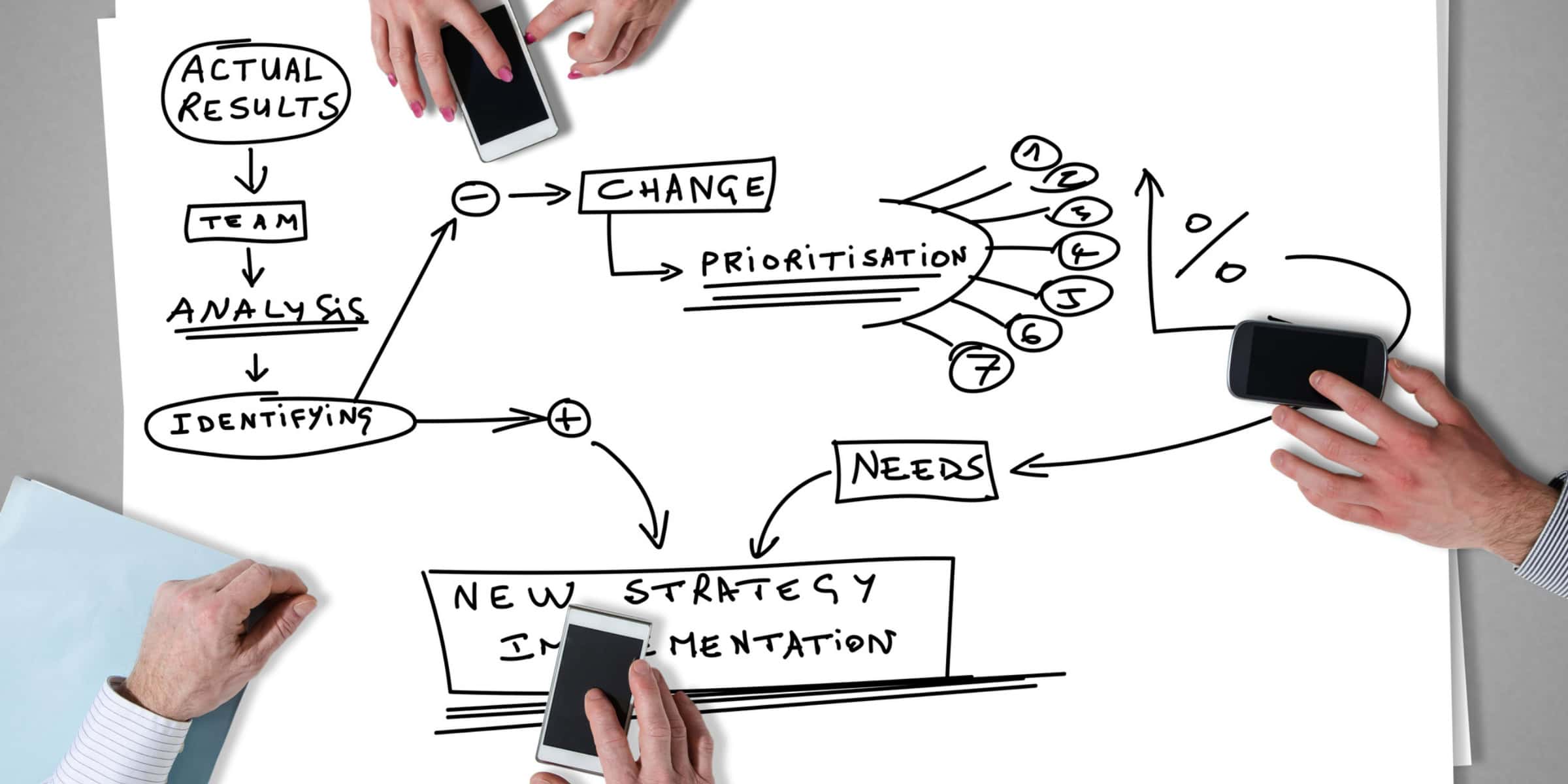Are you ready to lead your organization through the ever-evolving digital landscape? The digital age has brought about unprecedented changes in the way we communicate, work, and live our daily lives. As a leader, it is crucial to adapt to these technological advancements and navigate the challenges that come with them.
In this article, we will explore the importance of adapting to digital change leadership, understanding the challenges that come with it, and developing the necessary skills to lead your organization towards success.
We will also delve into the role of artificial intelligence, automation, and machine learning in the digital age and provide strategies for leading organizations in a rapidly evolving world.
So, buckle up and get ready to embrace the future of leadership in the digital age.
The Importance of Adapting to Technological Advancements
It’s crucial to keep up with the latest technology if you want to stay relevant in today’s fast-paced society. Adapting your mindset to the ever-changing landscape of technology is the key to future-proofing your skills and staying ahead of the curve.
With new advancements being made every day, it’s essential to stay informed and be open to new ideas. By embracing technology, you can streamline your work process, increase productivity, and stay connected with colleagues and customers.
With the rise of remote work, digital communication tools have become more critical than ever. Video conferencing and virtual collaboration tools are now the norm, and those who don’t adapt risk being left behind.
However, adapting to technological advancements is not just about keeping up with the latest gadgets or software. It’s about understanding how technology can help you achieve your goals and make your work more efficient.
So, take the time to learn new skills and stay informed about emerging technologies. By doing so, you can future-proof your career and stay ahead of the game.
Understanding the Challenges of Digital Change Leadership
Trying to keep up with the constant transformations in our technological landscape can feel like attempting to climb a never-ending mountain with roller skates on. As a change leader in the digital age, you must lead your team through this challenging terrain.
One of the biggest challenges you’ll face is navigating resistance. With any significant change, there will always be those who resist, whether it’s because of fear, uncertainty, or simply because they don’t see the value in the change. To overcome this challenge, you must first understand the root of the resistance. Is it a lack of information or understanding? Is it a fear of losing control or job security? Once you understand the underlying issues, you can address them directly and foster a sense of trust and openness.
Another challenge you’ll face as a change leader is fostering collaboration. Digital change is not a one-person job; it requires the collective effort of your entire team. However, collaboration can be challenging when people are used to working in silos or have different ways of approaching problems. To overcome this challenge, you must create a culture of collaboration. Encourage your team to share ideas openly and provide opportunities for cross-functional collaboration. By doing so, you’ll not only foster a sense of collective ownership but also create a sense of community.
In a rapidly evolving world, change is the only constant, and as a change leader, you must be prepared to navigate the challenges that come with it. Understanding the challenges of digital change leadership is the first step towards overcoming them. By addressing resistance head-on and fostering a culture of collaboration, you can lead your team through the ever-changing technological landscape and emerge stronger and more resilient. Remember, change isn’t easy, but with the right mindset and approach, it can be an opportunity for growth and innovation.
Developing Skills for Effective Change Leadership
You’ll learn how to hone your skills and become an effective change leader by developing a toolkit of strategies and techniques that will help you guide your team through the ever-shifting terrain of the modern technological landscape. Developing a leadership mindset is crucial to this process. You must be able to anticipate change, analyze it, and make decisions based on the best interests of your team and organization. By doing so, you’ll be able to create a roadmap for change and communicate it effectively to your team.
Communication skills are also essential for effective change leadership. You must be able to communicate clearly and effectively with your team, stakeholders, and customers. This means you need to be an active listener, an empathetic communicator, and a skilled negotiator. You must also be able to communicate the benefits of change, and how it will positively impact the organization, team, and customers. By doing so, you’ll be able to inspire your team, build trust, and create a shared vision for change.
To become an effective change leader, you must develop a toolkit of strategies and techniques that will help you guide your team through the ever-shifting terrain of the modern technological landscape. Here are five items to consider when developing your toolkit:
- Foster a culture of agile experimentation and iteration
- Build a diverse and inclusive team that brings different perspectives to the table
- Embrace failure as a learning opportunity and encourage experimentation
- Create a clear and concise roadmap for change, with specific goals and milestones
- Continuously communicate the benefits of change and how it will positively impact the organization, team, and customers
By honing your skills and developing a toolkit of strategies and techniques, you’ll be able to lead your team through the challenges of digital change. Remember to maintain a leadership mindset, communicate effectively, and continuously learn and adapt. With these skills, you can navigate the ever-evolving landscape of the digital age and drive success for your organization.
Embracing Artificial Intelligence, Automation, and Machine Learning
Are you ready to embrace the power of artificial intelligence, automation, and machine learning to transform the way you work and revolutionize your industry? AI integration is no longer a distant dream but a reality that’s already transforming businesses worldwide.
As a change leader, it’s your responsibility to equip your workforce with the necessary skills needed to adapt to this rapidly evolving technological landscape. AI integration has significant workforce implications. It’s important to ensure that your team is trained and retrained to work alongside machines.
This involves developing new job roles and responsibilities that complement AI technology, rather than replace them. This shift in mindset will help your team to embrace new technologies and work more efficiently, leading to increased productivity and profitability.
Incorporating AI integration into your business model is not just about staying ahead of the curve, it’s about creating a future-proof business. By investing in AI, you’re laying the foundation for your business’s future success.
Change leadership is about embracing new technologies and adapting to a rapidly evolving world. AI integration is just one of the many ways you can do this. Are you ready to take the first step and revolutionize your business?
Strategies for Leading Organizations in a Rapidly Evolving World
The key to thriving in today’s ever-changing landscape is to stay ahead of the game and keep up with the times. As a change leader, your responsibility is to create strategies that will help your organization adapt to the rapidly evolving world.
One strategy that has proven to be effective is collaborative innovation. By bringing together people from different departments and levels of the organization, you can tap into their unique perspectives and insights, and create new solutions that address the challenges of the digital age.
Another important strategy is to lead cultural shifts within your organization. This means creating an environment that is open to change, experimentation, and continuous learning. It also means fostering a culture of collaboration, where everyone feels empowered to share their ideas and contribute to the organization’s success.
To achieve this, you need to be a role model for the culture you want to create, and encourage others to do the same.
In the end, leading organizations in a rapidly evolving world requires a combination of skills, including strategic thinking, innovation, and cultural transformation. By embracing collaborative innovation and leading cultural shifts, you can create an organization that is not only able to keep up with the times, but also thrive in the digital age.
Remember, change is inevitable, but with the right strategies and mindset, you can turn it into an opportunity for growth and success.
How Can Change Management Models Help Leaders Adapt to the Rapidly Evolving Digital Age?
In the rapidly evolving digital age, essential change management models can help leaders adapt by providing a structured approach to transitioning their organizations. These models offer frameworks for understanding and managing resistance, communication, and cultural shifts, ensuring a smoother and more successful transition into the digital landscape.
Conclusion
Congratulations! You’ve reached the end of this article on change leadership in the digital age.
You now know the importance of adapting to technological advancements and the challenges that come with digital change leadership.
You’ve also learned about developing skills for effective change leadership and embracing artificial intelligence, automation, and machine learning.
But what does all of this mean for you and your organization?
The answer is simple: in order to thrive in today’s rapidly evolving world, you must be willing to change and adapt.
As a leader, you must be willing to take risks, embrace new technologies, and empower your team to do the same.
So, are you ready to take on the challenge of change leadership in the digital age?
Are you ready to lead your organization through the complexities of a rapidly evolving world?
If the answer is yes, then you’re well on your way to success.
Remember, change isn’t always easy, but it’s necessary for growth and innovation.
So, be bold, be innovative, and be the change agent your organization needs to succeed in the digital age.





